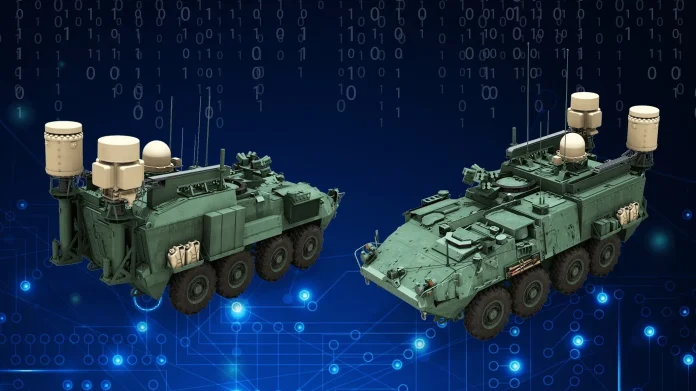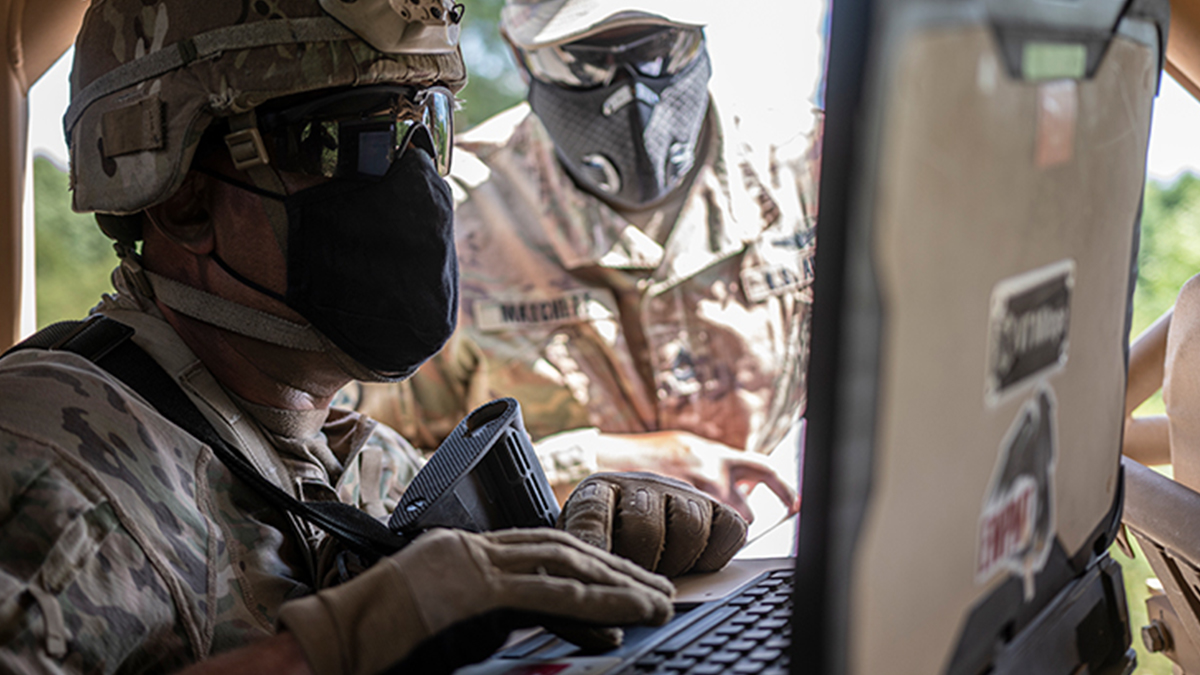
The US Army’s ATP 3-12.3 Electromagnetic Warfare Techniques publication hit the streets in January 2023. It provides an excellent insight into how the force sees EW.
ATP 3-12.3 supersedes the army’s previous EW doctrine published on 16th July 2019. The new publication “provides doctrinal guidance and direction to the army for conducting electromagnetic warfare during army operations.”
Great power competition is back on the agenda as far as US Army Electronic Warfare (EW) is concerned. Reflecting Russia’s second invasion of Ukraine on 24th February 2022 and the People’s Republic of China’s continued strategic machinations in the East and South China Seas “EW is and will be increasingly vital to army operations to defeat peer threats in support of all combat operations and across all domains,” the doctrine asserts. It adds that “as the threat becomes more advanced and the operational environment becomes more complex, the army will need to continue building and developing EW competencies to support decisive action and win in large-scale combat operations.”
Multi-Domain Operations
The synergistic nature of cyber and EW are recognised. Signals intelligence, EW and cyberspace capabilities should be used to analyse hostile civilian and military spectrum-dependent systems. This is the doctrine’s recognition of EW’s widening focus beyond hostile radar and communications networks. We are moving into the era of Multi-Domain Operations where every sensor, platform, warfighter, weapon, capability and base can be connected at all levels of war to perform synergistic operations across all domains. Applying EW and cyber capabilities holistically to understand what is happening in the radio spectrum is paramount.
These intelligence gathering efforts are no longer confined to opposing military capabilities. Hostile actors may be reliant on civilian telecommunications networks. This was underscored by the dependence of Russian forces in Ukraine on that country’s cellphone networks: “This effort builds the information that allows a commander to visualise the operational environment to a level of detail that allows centralised planning and decentralised execution.” Ultimately “the commander’s ability to manoeuvre and conduct operations within the electromagnetic spectrum is vital to achieve and maintain tactical, operational, and strategic advantages.” Over the long-term ATP 3-12.3 will be reviewed and updated “as needed to keep pace with continuously evolving threat electromagnetic warfare.”

What has prompted the US Army to release this new version of ATP 3.12.2? The force “regularly reviews its published doctrine to ensure the content is relevant to near-term operational environments, current capabilities, and current unit structures,” the army’s Cyber Centre of Excellent told Armada. The centre, based at Fort Gordon, Georgia, is one of the organisations involved with writing the doctrine. Indeed, a lot has happened since 2019 when the previous version of the doctrine was published. The army’s statement noted that “this version of ATP 3-12.3, as well as all previous versions have, and all future versions will, account for unclassified lessons learned from observing adversary use of EW in operations, including during Russia’s invasion of Crimea in 2014, and (the) Nagarno-Karabakh conflict in 2020, as well as military operations conducted by US forces.”
New Capabilities
The US Army is performing a wholesale modernisation of its EW posture. This is illustrated by new capabilities like Terrestrial Layered System (TLS) ground EW apparatus. TLS comprises two systems: the operational level TLS-EAB (Echelon Above Brigade) and TLS-BCT (Brigade Combat Team). Lockheed Martin and General Dynamics are developing phase one of the TLS-EAB. Both companies are also working on the TLS-BCT. Army EW command and control is enjoying an overhaul courtesy of Raytheon’s Electronic Warfare Planning and Management Tool (EWPMT). As the statement notes “these forces and capabilities were not extant when the previous version was published … ATP 3-12.3 will assist army units at each echelon to employ those capabilities.”
Key Messages
The new doctrine was drafted by an EW subject matter expert, the statement continued: “The completed draft was provided to other technical experts across the army for review and comment.” Experts who provided input to the updated version included the “army’s cyber and EW school, personnel responsible for developing, acquiring and fielding new EW systems (plus) EW experts in army combat units.”
Ultimately, the new doctrine has four key messages: It highlights “US forces’ reliance on many technical capabilities that themselves depend on access to the electromagnetic spectrum for sensing, control, and communication.” The doctrine emphasises “the necessity for units to be prepared to continue military operations if they cannot use these spectrum-dependent technical capabilities due to enemy actions or environmental effects.” Furthermore, the document stresses “the need for army commanders to understand all friendly, adversary, and civilian use of the electromagnetic spectrum in their operational areas (and) the importance of army units being cognisant of, and controlling, their observable electromagnetic signatures to prevent enemy detection.”
Although primarily intended for “EW professionals, including electromagnetic spectrum managers, and unit leaders in US Army manoeuvre units” ATP 3-12.3 is a highly relevant document for anyone interested in land electronic warfare.

Sign up to our Electronic Warfare Newsletter:
by Dr. Thomas Withington












